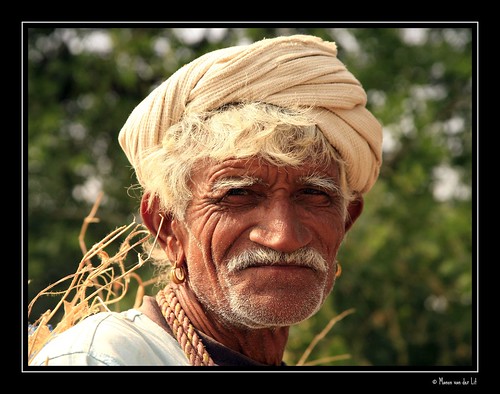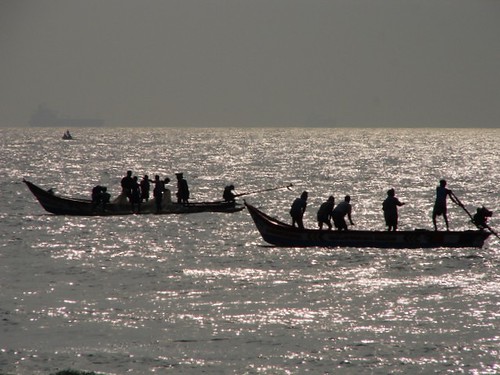Corrupt India
 We received a comment from Mr Osuri Devendra Phanikar, a social activist from Andra Pradesh. To ensure maximum visibility and effective discussion on the critical issue, we are publishing his comment as a post.
We received a comment from Mr Osuri Devendra Phanikar, a social activist from Andra Pradesh. To ensure maximum visibility and effective discussion on the critical issue, we are publishing his comment as a post.
Our democracy is standing on three legs of the constitution of India, the Legislature, the Executive and the Judiciary. The corruption has eaten away most of the two legs the Legislature, the Executive. And we are limping on only leg that is judiciary. The demon of corruption is trying to expand its fangs in to Judiciary too. If that happens, our democracy will be crippled and become a corpse.
Now a day, Government jobs have become very lucrative and very profitable business for those who got in to them. If there are no givers, there will be no takers. Those who encourage corruption and getting their things done by bribing officials are more dangerous than the actual corrupt officials. If people who are in responsible positions become onlookers and remain mum over corrupt practices of the concerned, it is as though they are abetting the corruption.
The virus of corruption has been eating into vital organs of our democracy, the executive and the legislature and it is ready to spread in to judiciary as well. The demon of corruption has become so powerful that it gobbles up any person who moves even an inch forward to resist it.
The rampant and unchecked corruption in our society is giving birth to extremism and unrest in the country. Bureaucrats and people’s representatives, by abusing their official positions, are using the corruption as a tool in their hands to do the businesses of minting easy money very much to the knowledge of the public.
The public are not coming forward to giving information about corruption to investigating agencies concerned as they failed to give protection to them from the corrupt. It is very unfortunate to state that the evil of corruption with its obscurity is turning very honest officials in to very corrupt ones.
The most affected lot are the middle class and the poor among the society as welfare schemes meant for them are being eaten away the corrupt officials and politicians.
The corruption has been hissing in such a way that it has started challenging very fabric of our democracy. If this menace is not bridled and checked, the people of Republic of India will loose faith in one of the best democracies in the world and will turn to other means. Now, citizens of our country are more interested in corruption free administration than they are in democracy.
There are tales of woe from the people affected by the rampant corruption which have not been heeded by the concerned let alone redressing them. The intellect and the public spirited citizens have almost started to give up their efforts to check the corruption as they feel that it has gone out of proportions and almost impossible task to have a go at it. Such frustration is not encouraging and good for democracy as a whole. Some non governmental organizations should have to instill a ray of hope in to them, so that their crusade against the corruption will not be eroded and diluted.
The best way to arm the investigating agencies like ACB, CBI, CVC and Lokayukatas in our country is to grant autonomy to them. Right now, they have become mere recommendatory authorities working under clout of the legislature and the executive. These agencies should have complete judicial powers as that of a court of law.
The intellect in our country shall have to see that representatives of people in the country are convinced and talked into introducing necessary and comprehensive bills in their Assemblies or Parliament to empower the already existing investigating agencies with powers necessary to weed out corruption from the public life.
Modus operandi of the corrupt who tasted ill-gotten wealth is that they go all out to protect their ill-gotten assets. In the process, they stoop down to any level including spending part of their ill-gotten money for harassing the persons who try to unearth their graft and threatening them with dire sequences. Every citizen in this country wants to live peacefully and no one likes to take any initiative in the eradication of corruption which in their view involves a lot of risks.
The corrupt are more intelligent than any one in this world as they make things upside down with their maneuvering capacity and by camouflaging and misinterpreting the facts and they can talk the investigating authorities in to doing favours to them with ease. No one should be surprised if the corruption becomes fourth defacto wing of our constitution apart from the legislature, executive and the judiciary in the near future. The voices of great persons who raised voices against corruption had been choked. For example, in the state of Andhra Pradesh former vigilance commissioner Sree Ramachnadra Samal in his 56 pages report under caption ’ MY YEARS AS VIGILANCE COMMISSIONER OF ANDHRA PRADESH’ submitted a report on some of the corrupt offices of all India services. But he was dubbed as fanatic and mad. The corrupt launched vilification campaign against him. Till now, the report has not seen the light of the day.
The corrupt have succeeded in anchoring family clubs which consist of persons who encourage corruption and get things done by bribing the bureaucrats and politicians. Now, they would like to extend their activities in to their family trees.
Corruption has become a profession for some of the bureaucrats and politicians in the state of Andhra Pradesh and become a great threat to democracy. As control machinery in is in deep slumber, the state of Andhra Pradesh is hitting records in Corruption. The accumulation of wealth by dishonest bureaucrats particularly from All India Services has been scot-free and increasing as days go by. The control authority in Andhra Pradesh is badly undervaluing the assets of disproportionate assets of the corrupt officials in such way that that they are taking documentary value of assets only at the time of purchase although they have the option of valuating the assets by appropriate authority. Conducting artificial enquiries in to corrupt practices of the dishonest will not serve any purpose and on the other hand a lot of unnecessary expenditure will be incurred to the exchequer of Government of Andhra Pradesh.
I therefore pray that every public spirited citizen of my country be pleased to make efforts to weed out corruption from the public life without fear or favour.
OSURI DEVENDRA PHANIKAR Social worker S.V NILAYAM, OSURI MANSION NARSAPUR-534275 W, G,DT AP Cell-09346610749 Land-08814-274842
Read more




 “If I speak the truth, I will not live.” were the last few words spoken by Janeshwar Sharma in a television interview. The deceased was working as a driver of the affluent business tycoon Anil Nanda.
“If I speak the truth, I will not live.” were the last few words spoken by Janeshwar Sharma in a television interview. The deceased was working as a driver of the affluent business tycoon Anil Nanda.
 Professor Prabhakar Singh is a young name in the field of international legal scholarship and the Third World Approaches to International Law (TWAIL). He is an alumni of NLIU, Bhopal and now working as Assistant Professor at the JGLS. He obtained his LLM in International Economic Law and Policy (IELPO) from the University de Barcelona, Spain. He has published more than 17 journal articles in leading international law journals and books worldwide.
Professor Prabhakar Singh is a young name in the field of international legal scholarship and the Third World Approaches to International Law (TWAIL). He is an alumni of NLIU, Bhopal and now working as Assistant Professor at the JGLS. He obtained his LLM in International Economic Law and Policy (IELPO) from the University de Barcelona, Spain. He has published more than 17 journal articles in leading international law journals and books worldwide.